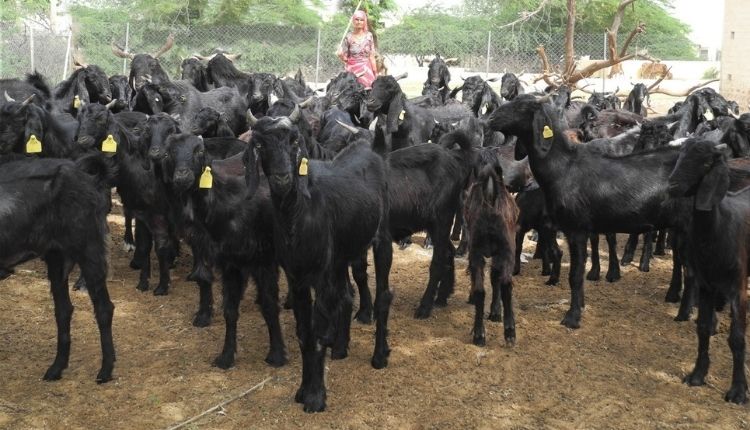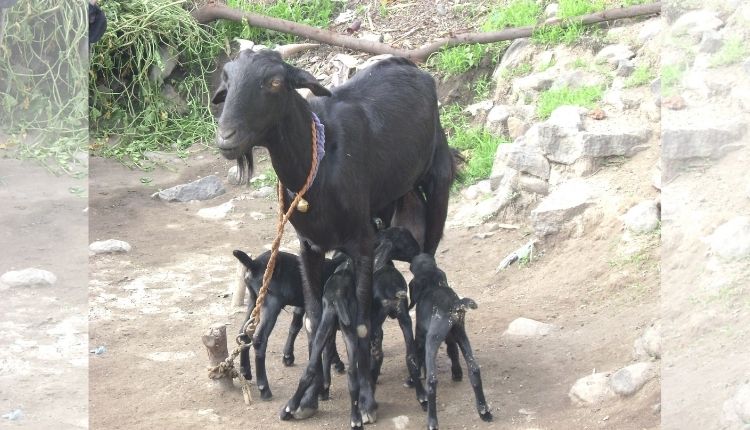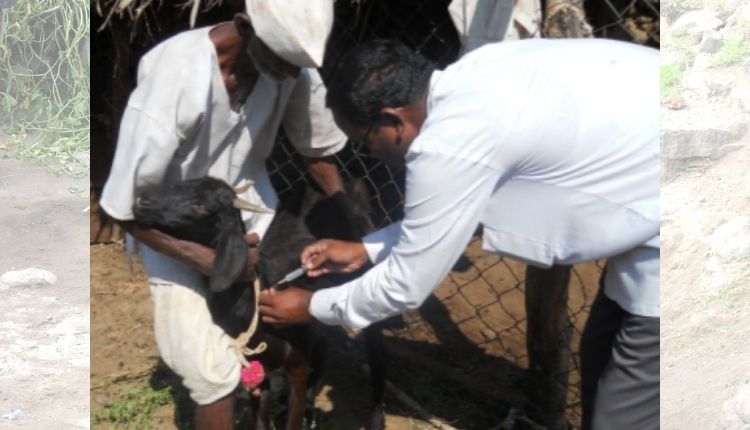Why Osmanabadi Goat is considered better for meat production?
This breed of goat gives birth to two or three kids at a time.
To increase the income, many farmers do the business of goat rearing along with farming. Goat rearing is a common business in the village, but for the right income, along with identifying the goat of good breed, there should be all the information from their fodder to care. Like cows and buffaloes, goats can also suffer from many types of diseases from which protection is necessary. There are many breeds of goats, one of which is the Osmanabadi goat. Come, let’s know what is the specialty of this breed?
Where is this breed found?
This breed of goat is found in Osmanabad district of Maharashtra, hence its name Osmanabadi goat. This breed is reared for both milk and meat, although this goat does not give much milk. It gives milk from half to one and a half liters. Although it is of many colors, but most of the goats are black and have brown or white spots on them. The goat of this breed weighs up to 32 kg, while the goat weighs around 34 kg.

What kind of feed do you like?
Goats of this breed like sweet, salty and sour all kinds of fodder. While giving food to these goats, it should be kept in mind that it should be at such a place where goats cannot urinate, because often they urinate at the place where they eat.
Goats are usually given berseem, garlic, legumes, peas, guar etc. in leguminous fodder. Apart from this, it also eats Peepal, Mango, Ashoka, Neem, Berry and Banyan leaves. Dry fodder includes gram, arhar, groundnut and stored fodder. Along with this, grains like millet, jowar, oats, maize, gram and wheat are also eaten.
Goat care
For good health of pregnant goats, milking should be stopped 6-8 weeks before calving. Keep the goat in a clean and open room two weeks before calving. After the birth of the baby i.e. the lamb, clean its body, nose, mouth and ears with a clean and dry cloth. Feed the first ghee to the lamb within half an hour of birth.

Common diseases of Osmanabadi goat
Foot and Mouth Disease (FMD), Goat Plague (PPR), Goat Pox, Hemorrhagic Septicemia (HS), Anthrax etc.
Osmanabadi goat vaccination
Timely vaccination is necessary to protect goats from various diseases. Goats should be given C D T or C D and T vaccine to prevent the disease called Clostridial. After birth the lamb should be given tetanus vaccine. After 5-6 weeks of birth, the lamb should be vaccinated to increase its immunity.

Specialty of Osmanabadi goat
- It is reared for both meat and milk, but mostly they are reared for meat, because they give less milk.
- They are very large in size.
- The ears of goats of this breed are of medium size.
- Usually it is black in color or with white or brown spots.
- Goats of this breed have horns, while only 50 percent of goats have horns, the rest do not.
- Where the goat of this breed weighs 34 kg, the goat weighs 32 kg.
- It usually gives birth twice a year and gives birth to two lambs or sometimes three at a time.
- The average age of goats of this breed is 12 years.
Contact us: If farmers want to share information or experiences related to farming with us, then they can do this by calling us on the phone number 9599273766 or by writing an email to [email protected] or by sending your recording. Through Kisan of India, we will convey your message to the people, because we believe that if the farmers are advanced then the country is happy.



